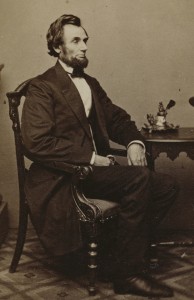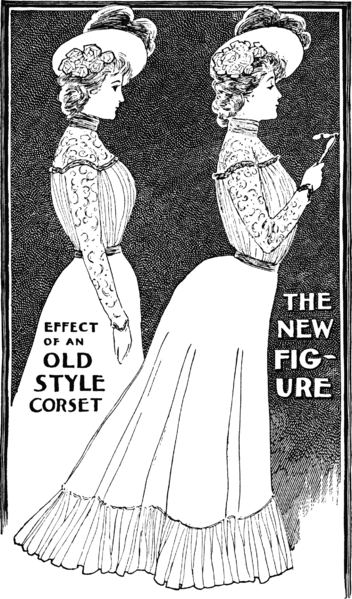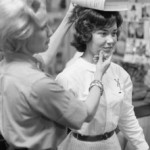The History of American Posture
 Computers and hand-held devices have clearly accelerated the posture problem, but we can’t blame everything on modern technology. The rounding of the American backbone has been in the making for over 150 years. The recent exaggerated hunching known as iPosture has crept into our lives relatively unnoticed, but the initial relaxation of postural standards was met with loud protests and political intervention.
Computers and hand-held devices have clearly accelerated the posture problem, but we can’t blame everything on modern technology. The rounding of the American backbone has been in the making for over 150 years. The recent exaggerated hunching known as iPosture has crept into our lives relatively unnoticed, but the initial relaxation of postural standards was met with loud protests and political intervention.
 In 18th century middle-class society, proper posture was an essential ingredient in formal situations. The body positioning of strangers was shrewdly evaluated as a measurement of upbringing, physical attractiveness, trustworthiness, self-control, and dignity. Respectable people regarded erect posture as the very thing that set us apart from the animals. Likewise, collapsed posture was seen as a manifestation of immorality and stupidity, a symptom of poor character that lead to things like masturbation and other failures of self-control.
In 18th century middle-class society, proper posture was an essential ingredient in formal situations. The body positioning of strangers was shrewdly evaluated as a measurement of upbringing, physical attractiveness, trustworthiness, self-control, and dignity. Respectable people regarded erect posture as the very thing that set us apart from the animals. Likewise, collapsed posture was seen as a manifestation of immorality and stupidity, a symptom of poor character that lead to things like masturbation and other failures of self-control.
Around 1850, the corset, which had been primarily used to support the breasts and promote erect posture, gained immense popularity for it’s ability to cinch the waist. Even though tight lacing was known to be dangerous, the quest for beauty won out in the fashions of the time. Corsets dangerously compressed the heart and lungs and contributed to the fainting spells that plagued women.
More than a hint of racism was present when the science of the day used physicality and posture to explain the origins of mental illness and other deficits. An erect spinal structure and straight bones were thought to be European traits that happened to strongly suggest superior character and intelligence. The budding “science” of Eugenics attempted to link physical traits to everything from homosexuality to deafness, fueling the middle class obsession with the proper physical demeanor.
The presidents Washington and Lincoln were said to have a classic physical trait of leaders: a largely proportioned trunk in relation to their height. Dr John Mason Tyler explains the logic behind this assertion in his 1907 publication, “the trunk contains vital organs which must furnish the income of food, fuel and oxygen, and remove the waste of the body.” He says that “men and women of greatest endurance are those with long trunk and short legs,” which enable the internal organs to function optimally and the mind to achieve it’s greatest potential.
 As the Victorian era drew to a close, posture was just one of the cultural norms that was under attack. Change was everywhere as the 20th century dawned on America. The predominately agrarian, rural population shifted to an increasingly urban and industrialized one as people flooded to the cities. The pull of modernity and consumerism was irresistible.
As the Victorian era drew to a close, posture was just one of the cultural norms that was under attack. Change was everywhere as the 20th century dawned on America. The predominately agrarian, rural population shifted to an increasingly urban and industrialized one as people flooded to the cities. The pull of modernity and consumerism was irresistible.
As straight-backed chairs and corsets gave way to couches and flapper dresses, slouching and informality became the fashion. Anyone who considered themselves to be modern adapted an air of casualness that would have made their grandparents cringe.
With the 1920s came a revolution in manners and morals. Even young people from nice middle class families were engaged in revolt against the ways of their horrified parents. Scandalous new fashion trends emerged and slouching became an act of rebellion. Erect posture was increasingly thought of as outdated and prudish, a notion that has survived to modern day.
 But the transition to a fashionable slouch was by no means a smooth one. In first half of the 20th century The American Posture League, along with doctors and teachers, pushed posture studies into the schools. Children were closely monitored in hopes of gaining a foothold on the growing problem. Physical education teachers routinely performed posture evaluations, carefully prescribing antidotes for rounded spines and caving shoulders.
But the transition to a fashionable slouch was by no means a smooth one. In first half of the 20th century The American Posture League, along with doctors and teachers, pushed posture studies into the schools. Children were closely monitored in hopes of gaining a foothold on the growing problem. Physical education teachers routinely performed posture evaluations, carefully prescribing antidotes for rounded spines and caving shoulders.
Ivy league administrators adopted the practice of dismissing students if their posture and physical condition was deemed inappropriate at the time of enrollment. About a third of first-year students were assigned special exercise assignments to correct postural defects. Universities such as Vassar started a fundamentals program in the 1930s that persisted through the 1960s where students were painstakingly taught the elements of good posture when engaged in any kind of life activity, such as getting out of the car.
 It is now clear that the war on posture has been completely lost and the remnants of zealous posture training are barely visible in the culture of today. Since the late 19th century the posture of every generation has continued to devolve.
It is now clear that the war on posture has been completely lost and the remnants of zealous posture training are barely visible in the culture of today. Since the late 19th century the posture of every generation has continued to devolve.
In a 2013 survey by Simplyhealth, the UK’s biggest health cash plan provider, three quarters of baby boomers reported being told to sit up straight by their parents and more than half reported receiving postural guidance from teachers. By contrast, 59% of parents today reported never once asking their children to mind their posture.
Read about the controversial posture reform efforts in public schools 1913-1950 in our blog.

